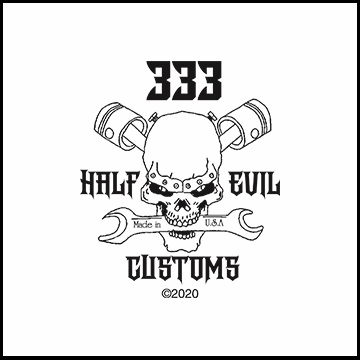More than a couple of days….had to get some other stuff done, and damn, it is cold here.
First, yes, I have called the Barrel type insert a “Time-Sert” type insert. Sorry, that isn’t entirely correct. A true “Time Sert” is the same idea, but is recognizable as a “Time-Sert” by having small steel prongs protruding from the top that are used to lock the barrel insert in place after being threaded in to the correct depth. I have the habit of calling all barrel type inserts “Time-Serts”. The one in the picture in my previous posts looks like one of the type available from McMaster Carr’s catalogue. McMaster’s price is about 1/10 of what our local retailers charge for those. But the outside threads are 3/8 NC, way too big to keep the alignment pins intact.
Someone else on here said they could get solid thread repair inserts the same outer diameter as a Heli-Coil…where? I have never seen such a beast. In fact, all the inserts I could find would require destroying the dowel pin holes. Do the math here, and in order to get a threaded insert inside the 8 mm diameter dowel pin holes, you will end up with an insert with minimum wall thickness of 0.021”. Under normal circumstances, that thickness of steel would easily break when torqued to 9 ft-lbs (108 in-lbs).
So here is the theory behind what we are doing. The idea is to use a common thread type for the outer part of the inserts. This is so a standard size tap can be used in the head. We chose 5/16” NF, as it is readily available, and so is grade 8 or better grades of high strength steel threaded rod. McMaster Carr to the rescue, we order the stuff in 3 ft. lengths. 5/16” NF was the best compromise, as the largest size of rod that is smaller than the 8 mm dowel pins (knock pins to many, BTW), and the fine thread kept as much insert wall thickness as we were going to get.
But what about that 0.021” wall thickness? Well, that does present some difficulties. First, if we had tried to simply drill and thread the inside of the 5/16” NF rod to M6 x 1.0, the stresses of running the tap would almost certainly have broken the thin steel if the rod wasn’t re-enforced somehow while the threads are being cut. So we made an internally threaded sleeve out of ½” diameter free machining steel stock to go on the outside of the rod while drilling and tapping the inside. The sleeve keeps everything in place and prevents breakage. Also, the sleeve was made 0.800” long, the length of our finished inserts. Handy for cutting the 5/16” rod to length after drilling and threading each insert.
Second, we still have a relatively weak 0.021” wall insert. Well, that won’t be a problem for two reasons. One – we will carefully bond the inserts in the head using high strength lock tight thread adhesive (red Locktite). That should make them nearly as strong as a stainless steel Heli-Coil insert. Two, because we will be using studs rather than bolts to fasten the cam bearing caps, the peak stress on the inserts will be considerably reduced.
On to making the inserts (for this head, we needed 15 of them). First, here are the basic tools. One each quality HSS taps.
• 5/16 NF Plug or Taper
• 5/16 NF Bottoming
• M6 x 1.0 Plug or Taper
• M6 x 1.0 Bottoming
• Edge cutting fine flat file the same thickness as your flat blade / slotted screwdriver used to turn the inserts into the head later – shown is a wedge file. A flat jeweler’s file will work.
• A test M6 x 1.0 bolt
• Our 5/16” NF threaded sleeve.
Step 1, make our threaded sleeve. O.D. is ½”, drilled and tapped through the center 5/16” National Fine, on a lathe. 0.800” long.
Step 2, thread sleeve onto threaded rod until flush with the end, then chuck rod (not insert) into the lathe chuck with the sleeve butted up tight against the jaws. If the end of the rod needs to be faced square, leave enough rod protruding to face flat to end of the sleeve.
Step 3, center drill to guide the tap drill. Here you can see how the sleeve is NOT in the chuck.
Step 4, drill to the correct tap drill – for M6 x 1.0 that is listed as 5.00 mm, or a no. 8 drill. No. 8 is actually slightly oversize, so we used a no. 9 drill to keep as much wall thickness as possible. Drill only 0.900” deep, as it is necessary to end face the rod and start a new center – drilled hole in the unused portion of the threaded rod every time. Otherwise, the drill will tend to wander off center with each additional insert made.
Post broken here for size limits, continued below…



